How to propagate actinidia?
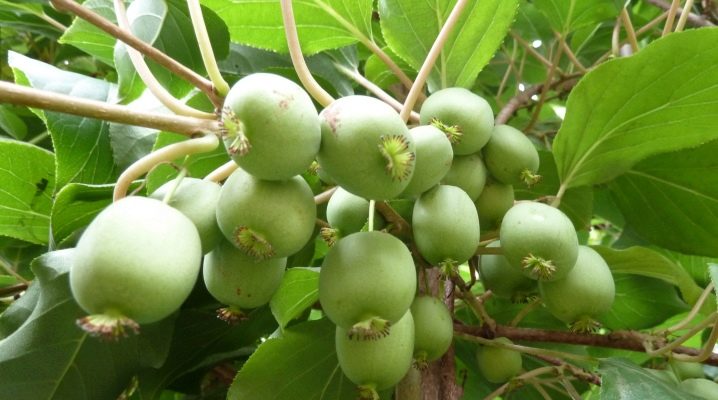
Actinidia is a woody liana. The countries of Southeast Asia are considered its homeland. The fruit of the plant is the well-known kiwi fruit. Despite many nuances, people around the world have learned to grow it on the territories of their states. In order for the plant to please the owner for many years, it is worth learning how to propagate it correctly. This process can be carried out in several ways, they will be discussed in the article.
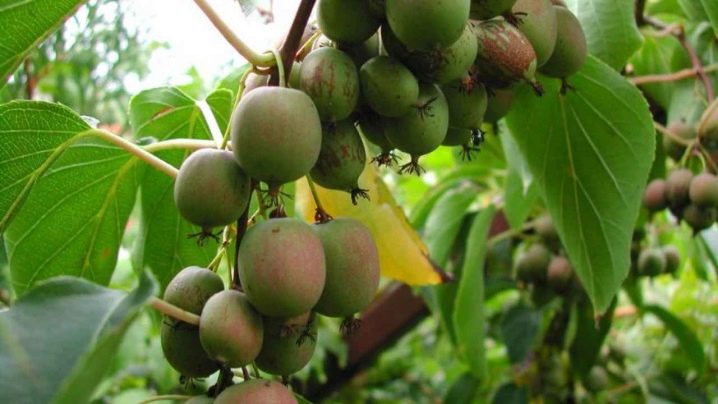
Propagation by cuttings
The first, most effective and fastest way to propagate actinidia is by cuttings. Thanks to this method, several seedlings can be easily obtained at once. Even a novice gardener can cope with this task. The most suitable time of the year for harvesting cuttings is the last month of spring. Although many people start this process in early June. It all depends on when the end of the flowering of actinidia comes. In addition, a favorable temperature must come (+ 20-22 ° C) in order for the plant to take root at home.
It is important to note that strong and thicker shoots must be cut. You need to cut them off at the very base. As a rule, rooting occurs in the lower part of the shoot, so it must be cut at an angle. To prevent drying out, it is recommended to keep the seedlings in a container with water. Further, before planting, the cuttings are prepared.
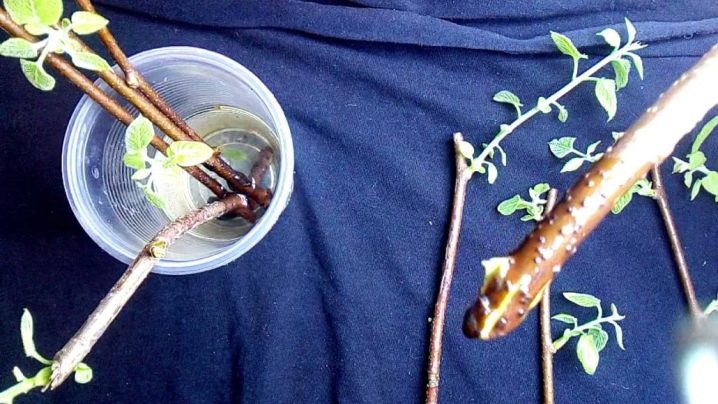
Already in the summer, it is worth preparing for the cold. To prevent the shoots from dying in the fall and with the onset of frost, it is recommended to prepare a special greenhouse in July.
Planting in normal soil may not give successful results. It is necessary to make a mixture of humus, peat, crushed stone, sand (ordinary and river) and black soil. Everything must be added in equal amounts. The soil is placed in a greenhouse, and calcined sand is scattered on top to protect the cuttings from microbes. Further, it is proposed to familiarize yourself in more detail with the common methods of grafting.
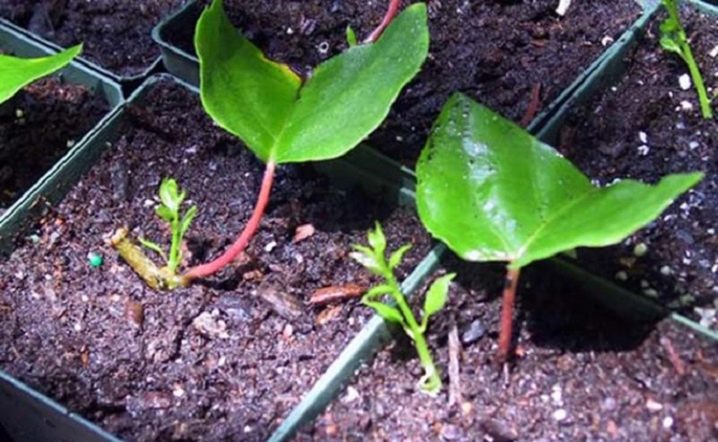
Green
You can start reproduction with green cuttings from late May or early June. The main thing is to do this in warm weather, when the thermometer is at least + 20 ° С. The gardener will know that the vine is ready for breeding when he sees the plant take on a brown hue. At this time, the first fruits begin to appear on it. Next, you need to follow the instructions.
Some varieties of actinidia have female and male vines. They can be distinguished when blooming in late spring. Male flowering begins 5-9 days earlier. The flower itself has 5 petals and stamens. The female vine can be distinguished by its thickened pollen tube. It can be green, pink, or red. It is necessary to pick up paired shoots, each of which must be at least 0.5 m.
It is worth choosing a thicker stalk, it is also better if it is taken from the bottom of the branch. In this case, there is a high probability that it will take root.
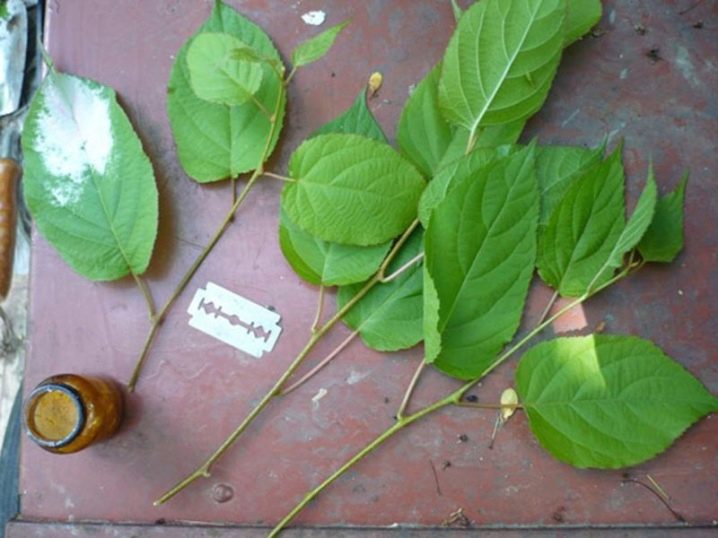
At the bottom of the petiole, you need to make a small oblique incision. There should be 3 leaves on it. Then you need to remove 2 side ones, and 1 top one must be cut to half. Before the procedure, it is worth checking how sharp the pruner is. If you work with a blunt blade, you can damage the breeding material.
When everything worked out, the cuttings are lowered into a bucket of water. It is advisable to add a solution to promote rooting there. The seedlings are left in the shade or in a lighted room for 8-12 hours.
While the cuttings are soaking in water, containers and seedling substrate can be prepared.You should take turf, humus and peat in a 1: 1: 1 ratio, then mix well. The soil is placed in pre-prepared containers; it is recommended to sprinkle a layer of sand fried in the oven on top. It is important to water the soil abundantly.
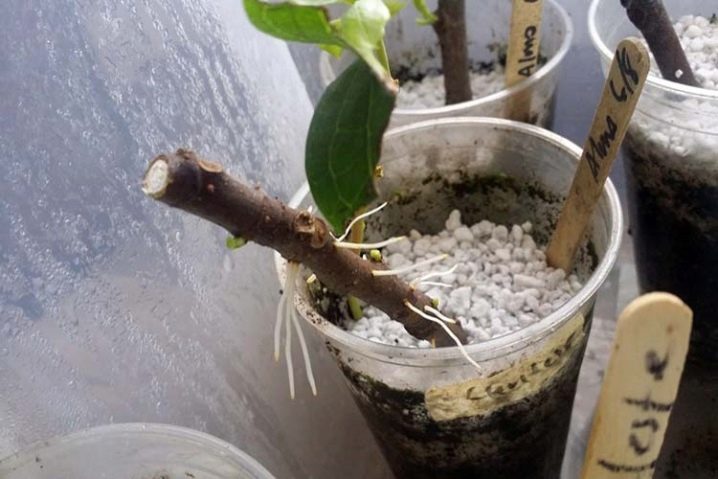
When the set time has passed, the seedlings must be removed and rinsed with warm clean water. Cuttings should be planted at an angle. The deepening should be 5-7 cm.
The distance between each of them is about 6-8 cm. It is also advisable to carry out mulching with fine sawdust. This will enable the soil to retain moisture for a long time. After planting, it is required to cover the seedlings with foil. The greenhouse itself should be in the shade so that the temperature is not too high.
After 2.5-3 weeks have passed, the plants will begin to appear roots. A little later, the first young leaves will appear. At this time, you can start airing the greenhouse. However, the temperature must be maintained stably within + 18-24 ° C.
In mid-August, it is recommended to remove the film altogether. After all, plants must begin to harden before the onset of cold weather. And for the night time, they use a cover made of mats and frames. The seedlings should overwinter in greenhouses, and in the spring they must be planted in open ground. The main thing is to do this before the buds bloom.

Stiffened
This method is also simple and effective. Harvesting wooden cuttings is exactly the same as in the case of green ones. But the difference lies in the type of shoots and the season. It is necessary to cut the material no earlier than the end of October. There should be at least 2-4 buds on the petioles. The branches are tied in bundles and placed vertically in wide containers with sand. It is very important to monitor the stability of the temperature, which should fluctuate between + 2-7 ° C.
Some gardeners carry out such manipulations in winter (at different times) or at the beginning of March. The cut sites must be treated with paraffin. So it will turn out to protect the seedlings from diseases. Then they are placed in the moss (the main thing is to monitor its moisture content) and taken out with the onset of the end of spring, when it is time to disembark in a greenhouse.
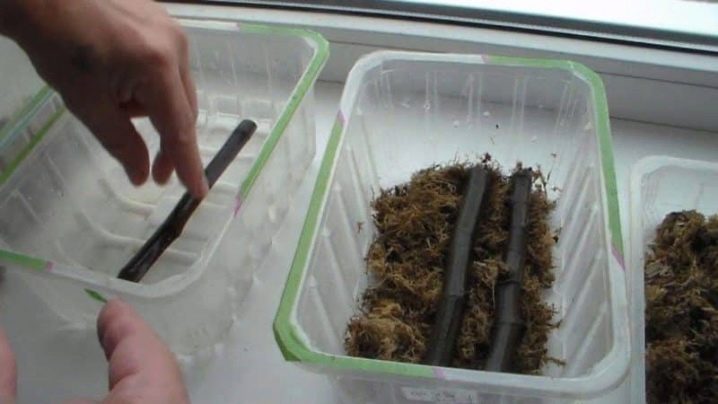
A few days before planting, the cuttings are placed in a solution to help stimulate root formation.
At this time, you can prepare the soil in the greenhouse, add the same ingredients there as when planting green petioles. The sprouts are placed in the ground at an angle of 45 °. They need regular hydration, at intervals of 2 days. The greenhouse should be in the shade. After a year, the seedlings can be safely placed in the garden.
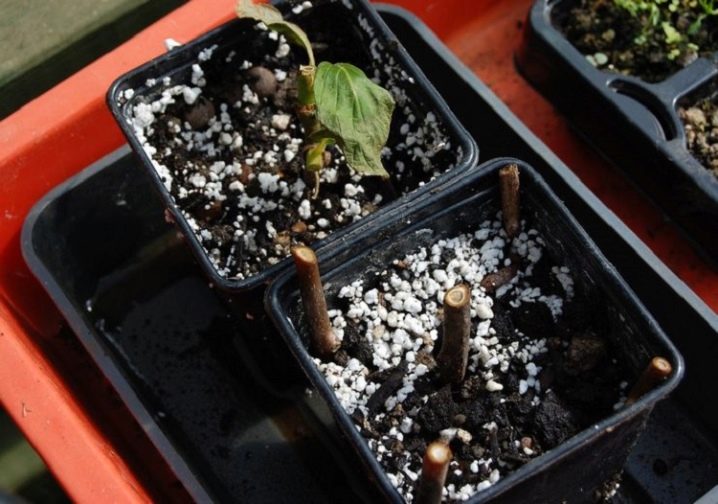
Combined
The process of breeding actinidia with this method originates from the first month of summer. The gardener must choose the strongest shoot of the year. At its beginning there should be a one-year branch of a vine. The material, greenhouse, soil and planting are prepared in exactly the same way as described in the previous sections.
During the rooting period, seedlings must be watered and protected from the sun daily. Those who choose the combined method of cuttings will notice that the root system is developing remarkably in the sprouts. Landing in the ground is planned for next year in late spring.
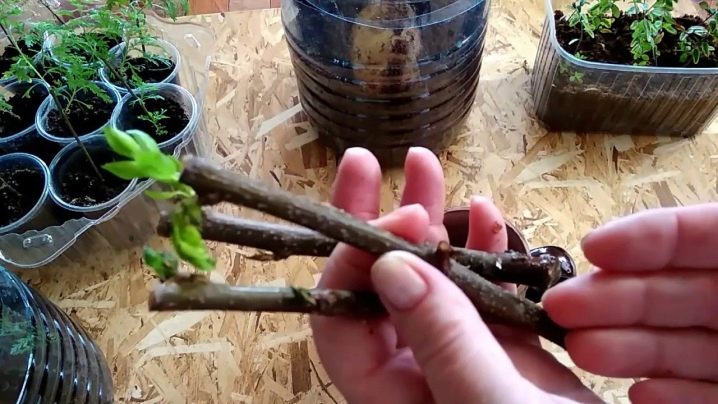
Using layering
This type of breeding actinidia is not the most productive, but it is very suitable for beginners and amateurs. With the onset of spring, it is necessary to dig several seedling grooves in soft soil. Sufficient depth is 10-12 cm. The pits should be filled with water, it will be absorbed in a few minutes. As seedlings, you need to take powerful one-year-old shoots.
Only with their help can a full-fledged climbing plant be cultivated.
The lower part of the vine should be laid and dug in, and the middle one should be leveled with wooden sticks. You don't need to touch the top. Plants should be regularly "watered" and gradually increase the amount of land around. In addition, in order to grow a new healthy bush, actinidia should be regularly looked after, weeded, loosened the ground, and tied up the shoots.
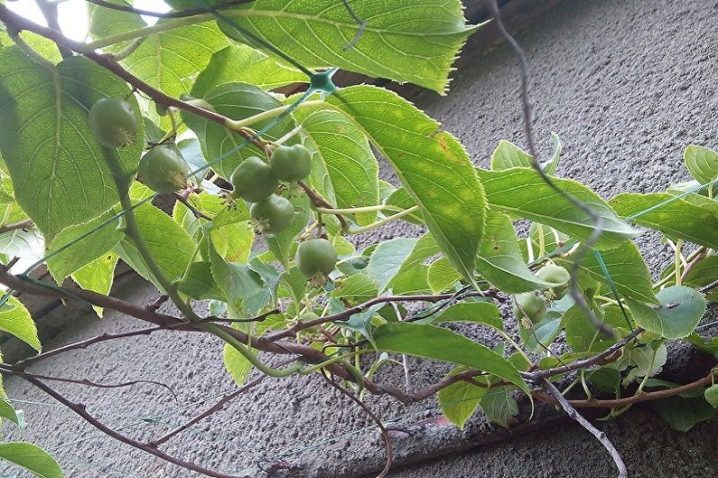
Dividing the bush
When a bush is transplanted to a new place, then it can be divided into several parts, which have their own roots and stems. This is best done either in the spring, when the buds are swelling, or at the end of autumn, before frost. The plant needs to be dug up and get rid of old and dry branches. Carefully clean the root system of the ground and start separating the bush with a sharp tool, a pruner is a good choice. When cutting, it is important to pay attention to the fact that each seedling must have fully developed stems and roots. If everything succeeds, then you can dig a hole, spill it with water and plant a sprout.
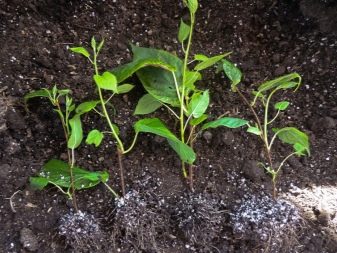
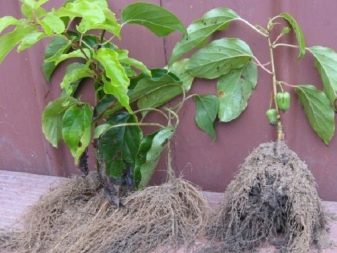
Seed breeding
Seeds are selected from ripe, healthy actinidia fruit. They need to be kneaded and rinsed with warm water. Then place on a napkin or absorbent cloth. The seeds should dry, but not in the sun. Then they need to be filled with water at room temperature by 1.5-2 cm. The water should be changed every day for 4-6 days. After that, the seeds must be laid out on a nylon cloth and placed in a container with wet sand.
The box should be located in a room with an air temperature of + 20-23 ° C. Every week, the seeds need to be taken out, ventilated for 5-8 minutes, rinsed and put back into the soil. They should not dry out. After a strong seedling appears, it should be moved to the greenhouse. And the next year, you can safely plant it in open ground.
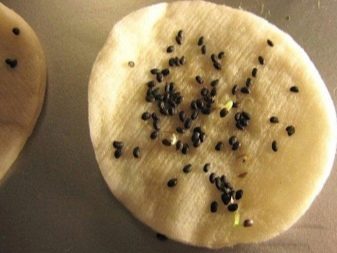












The comment was sent successfully.